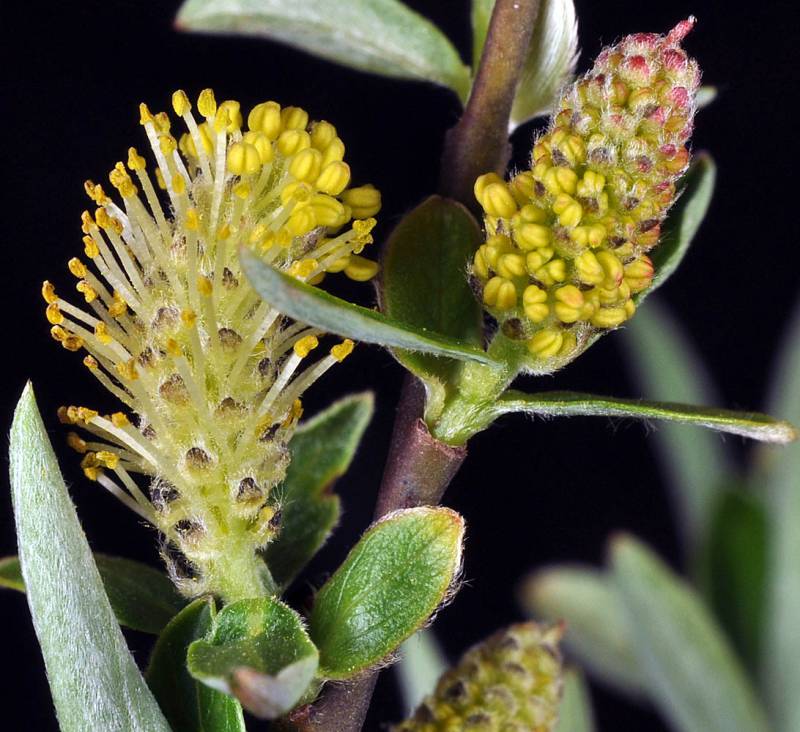Hosted by the University of Washington Herbarium, Burke Museum
Publication: Öfvers. Kongl. Vetensk.-Akad. Förh. 15: 122. 1858.
Origin: Native
Herbarium search: CPNWH
Notes: FNA7: "Salix geyeriana is characterized by its dark gray appearance, slender, dark branches, narrow leaves long-silky on both surfaces, general absence of stipules, and small, subglobose catkins. Plants in the Pacific Northwest with foliaceous stipules may be hybrids or introgressants, but the other parent is unknown.
Hybrids:
Salix geyeriana forms natural hybrids with S. bebbiana, S. irrorata, S. lemmonii, S. ligulifolia, and S. pedicellaris. Alleged hybrids with S. sitchensis, based on plants from British Columbia with broader, more hairy leaves, and catkins longer than in S. geyeriana, but with the short stipes of S. sitchensis (J. K. Henry 1915), are unconvincing.
Salix geyeriana × S. lemmonii is uncommon but in mixed stands of the parental species some plants resemble S. geyeriana in having relatively short, subspherical catkins, small anthers, and petioles sometimes with petiolar glands; and S. lemmonii in having leaf blades amphistomatous, margins serrulate, and foliaceous stipules on early leaves. Because the species have different chromosome numbers, hybrids may be infertile, but occasional seeds have been seen. This hybrid is known from California (Lassen and Sierra counties), Oregon (Jefferson and Lane counties), and near Victoria, British Columbia.
Salix geyeriana × S. pedicellaris occurs in Washington. It has the white and ferruginous hairs on leaves and ovaries of S. geyeriana, and leaves glaucous adaxially with prominent 2 and 3 veins of S. pedicellaris."
Last updated 2/10/2024 by David Giblin.

